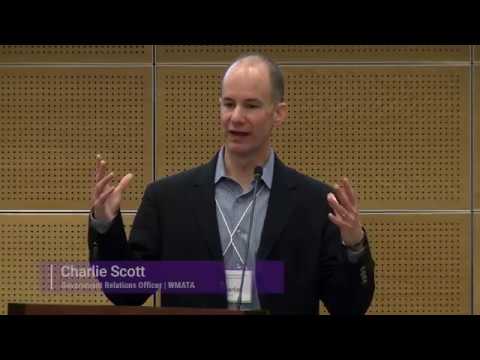Relating to a survey that is recent by Wells Fargo, the solution is just a resounding “No. ”
Here’s a primer…
As the main utilization of the ultimate guidelines associated with Dodd-Frank Act, you will have a mix of different RESPA and TILA regulations to produce all-new disclosure papers built to become more helpful to customers, while integrating information from existing papers to lessen the general amount of kinds.
Utilization of this rule that is new two processes regarding the home loan deal and impacts every person taking part in real-estate and gets into impact October 3rd, 2015*. These changes will make upon borrowers in their home loan shopping process and with the scheduling of loan closings when the rule’s implementation can potentially require last minute negotiations for sales contract extensions as realtors are typically the ones who have the first interaction with homebuyers, its important that they are provided with educational resources to clarify the impact.
Key popular features of the built-in RESPA/TILA kinds consist of:
-When using for a financial loan, the loan that is new (LE) document replaces the Truth-in-Lending Disclosure (TIL) together with Good Faith Estimate (GFE).
-At loan closing, the brand new Closing Disclosure (CD) replaces the last TIL and HUD-1 Settlement Form.
-Loan applications taken just before October 2015*, need making use of the old-fashioned GFE & HUD-1. As a result, loan providers may be telling shutting agents for months in the future whether to make use of the HUD-1 or even the CD that is new loan closing.
In essence, customers will get one document rather than two and utilization of the guideline will expire the original Good Faith Estimate and the HUD-1 Settlement Form for several loan deals, not all. These guidelines use to the majority of closed-end customer mortgages. They don’t affect house equity credit lines (HELOCs), reverse mortgages, or mortgages guaranteed by way of a mobile house or by a dwelling that’s not attached with genuine home (i.e., land). Strangely enough, for those loans, the forms that are old continue being utilized that will produce a multitude of problems both for loan providers and settlement agents.
The buyer Financial Protection Bureau (CFPB) governs utilization of the guidelines which define an application for the loan because the assortment of these six products: 1) debtor title, 2) debtor Social Security quantity, 3) debtor earnings, 4) home target, 5) estimate of property value, and 6) home loan amount required. As soon as these six things are gathered, loan providers aren’t allowed to need other items before issuing that loan Estimate, because was indeed permitted formerly before issuing TIL disclosures and/or GFEs.
The Loan Estimate
The Loan Estimate (LE) is designed as an evaluation device meant to offer monetary uniformity for borrowers with which to search various lenders and aims to supply them with an easy method to comprehend the data being given. Uniformity regarding the LE through the entire market additionally applies to timing. The LE must certanly be sent to the debtor within three company times of using that loan application. No costs may be gathered and no Intent To Proceed (ITP) may be required until a job candidate has received the LE much as it is needed in today’s environment that is operating the great Faith Estimate.
Effects on Implementation and Unintentional Consequences
In the shopping stage regarding the home loan financing procedure, a debtor typically expects to gather various cost that is pre-application to see loan program choices and these price quotes may then be employed to compare equivalent offerings from different loan providers. These quotes are non-binding towards the loan provider because they’re predicated on particular presumptions such as:
-credit rating
-property kind (single-family, condo, PUD, wide range of devices (1-4)
-value of home
-loan quantity
-intended occupancy (owner-occupied, 2nd house, investment)
-debt-to-income ratio (DTI) Today, there isn’t any guideline in presence that forbids a lender from issuing of the pre-application price estimate ahead of a debtor making loan application that is full. After August 2015, once more, there’s absolutely no guideline which will prohibit this task. Post August 2015, a pre-application estimate is forbidden to check like either the new LE or the current GFE and certainly will want to add particular language that it’s not to ever be looked at an LE.
Overall, the mortgage Estimate is supposed to offer consumers more helpful tips concerning the key features, costs and dangers of this loan which is why they’ve been using, but right right here’s the fact… If loan providers go with the LE rather than creating pre-application price quotes and in case their loan operating systems (LOS) have limits that simultaneously prohibit the issuance of a LE to simply circumstances where all six aspects of a loan application are gotten to be able to guarantee https://installment-loans.org conformity with all the timing for the distribution for the LE towards the debtor (while they presently do whenever issuing a beneficial Faith Estimate GFE), then the debtor will basically need to make application by having a loan provider so that you can have the Loan Estimate – which is then counterintuitive towards the partial intent for the LE which will be to compare loan options before making application.
Furthermore, the TILA/RESPA guideline forbids a lender from needing that supporting documents be delivered just before issuing the loan that is new. As a result, in many situations, the LE will be granted on the basis of the unverified information that is supplied to home financing loan originator (MLO). If borrowers accidentally misrepresent their income, assets, home kind or meant occupancy between one loan provider and another, the LE’s (and/or pre-application price estimates) gotten from each loan provider will invariably produce various prices.
The Closing Disclosure
the component that is second of RESPA/TILA integrations could be the Closing Disclosure and it is designed to reduce shocks in the closing dining dining dining table concerning the amount of money borrowers will have to bring towards the closing dining table. The closing that is new (CD) is really a mixture of the existing Truth-in-Lending (TIL) disclosure and also the Settlement Statement (HUD-1). It’s important to see that the CD that is new governed by the Truth-in-Lending Act (TILA), maybe perhaps not the true Estate Settlement Procedures Act (RESPA). TILA provides accuracy that is different and enforcement provisions than RESPA, along with some variations in definitions, with associated dangers and charges which can be far more serious than RESPA.
The largest modification that should come through the TILA-RESPA built-in Disclosure Rule is the fact that the debtor must get the Closing Disclosure at the least three company times just before consummation in place of the present 1 day dependence on distribution when it comes to HUD-1.
TILA defines consummation to be: “The right time that the customer becomes contractually obligated on a credit deal. ” Each loan provider is kept to decide at what point it considers that a debtor happens to be contractually obligated on a deal. Although a 3-day right of rescission rule is applicable whenever refinancing owner-occupied properties, numerous loan providers opting for to determine the consummation date once the date the borrower indications the loan papers despite the fact that theoretically, the debtor nevertheless has three times to rescind the offer.
A positive for all parties, its implementation is creating major challenges for lenders and settlement agents alike while its affect is no doubt. Typically, settlement agents prepare the Settlement that is HUD-1 Statement. In this new environment where loan providers have to show conformity of distribution of this Closing Disclosure towards the debtor, there clearly was much debate and concern over who’s in charge of the precision regarding the CD. Loan providers can only just guarantee their charges. Payment agents have the effect of ensuring all the charges are accurately represented in the closing statement. This wedding of obligations is needing loan providers and settlement agents to open up better lines of interaction much previously along the way.
RESPA-TILA Integration Details
The loan that is new consist of three pages plus the Closing Disclosure consist of five pages. For borrowers and Realtors, to see the proposed new disclosures, look at the customer Financial Protection Bureau (CFPB) website and scroll into the Participate tab then find the dropdown for Mortgages. For loan providers, the CFPB in addition has given an in depth 96 web page description among these two brand new types which are viewed online at help Guide to the mortgage Estimate and Closing Disclosure Forms.
*Updated July 2015 to mirror the CFPB’s choice to wait execution from August to October 2015.









